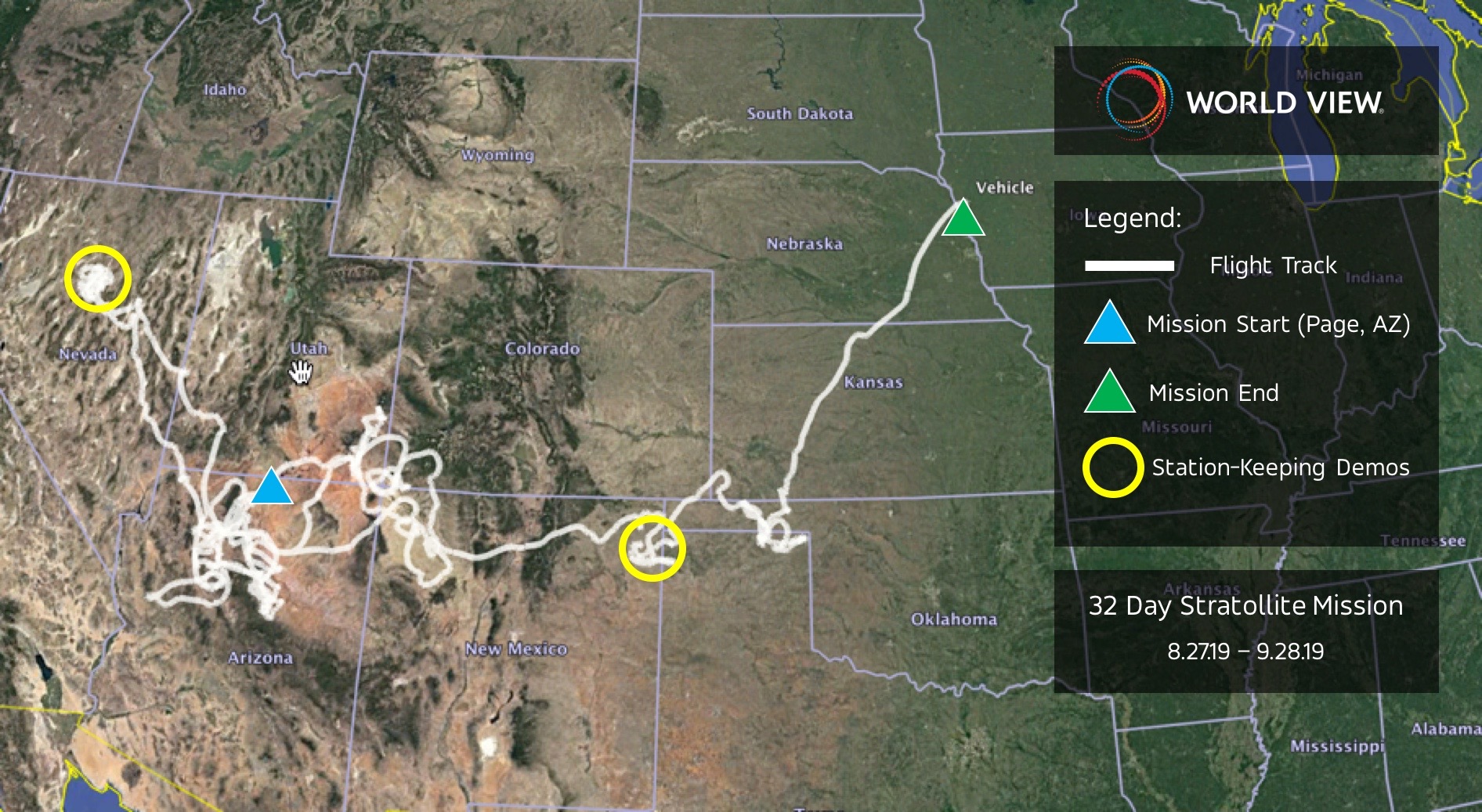
A high-altitude balloon system continues to float toward commercial flight.
The uncrewed "Stratollite" platform, built by Arizona-based World View Enterprises, stayed aloft for 32 days on its latest test flight, company representatives said. That's double the balloon's previous duration record, which was set this past June.
"This is another encouraging milestone for the team and our customers that confirms we are on the right track,” World View President and CEO Ryan Hartman said in a statement. "It sets the stage for a challenging set of missions ahead of us as we continue to push the envelope and demonstrate the ability of the Stratollite to meet customer requirements."
Related: World View Wants to Open a New Market at the Edge of Space
Stratollite is a portmanteau of "stratosphere" and "satellite." The name lays out the balloon's envisioned role — giving customers long-term bird's-eye views of large patches of ground.
Stratollite can host a variety of payloads and is operated under full navigational control, so its potential uses are many, World View representatives have said. For example, the system could help track severe weather and monitor natural disasters, and could also aid military reconnaissance missions.
The latest test mission began on Aug. 27 with a liftoff from the northern Arizona town of Page, and ended on Sept. 28 with a touchdown in Iowa. The Stratollite flew 6,960 miles (11,200 kilometers) during its month-long jaunt, crossing the borders of 10 states (Arizona, Utah, Nevada, Colorado, New Mexico, Texas, Oklahoma, Nebraska, Iowa and Kansas).
Get the Space.com Newsletter
Breaking space news, the latest updates on rocket launches, skywatching events and more!
Mission-team members at World View headquarters in Tucson, Arizona, maintained control of the Stratollite the entire time, company representatives said. The balloon successfully completed two "station-keeping" exercises as well: It managed to stay within 12 miles (20 km), on average, of one target for four straight days, and within 25 miles (40 km) of a second target for 2.5 consecutive days, World View representatives said.
This same balloon will be refurbished for another flight, which may occur soon.
"The company plans to launch multiple missions in the very near future, focused on demonstrating optical imaging and synthetic-aperture, radar-sensing systems with further enhancement of station-keeping and navigational performance," World View representatives said in the same statement.
World View is also developing a crewed balloon system called Voyager, which is designed to give customers long looks at Earth from 100,000 feet (30,500 meters) up — about three times higher than commercial airliners fly.
- World View Raises $26.5 Million for Near-Space Balloon Systems
- Spaceport Tucson Takes Flight with World View 'Stratollite' Balloon Launch
- World View's Near-Space Tourism Balloon Rides in Pictures
Mike Wall's book about the search for alien life, "Out There" (Grand Central Publishing, 2018; illustrated by Karl Tate), is out now. Follow him on Twitter @michaeldwall. Follow us on Twitter @Spacedotcom or Facebook.

Join our Space Forums to keep talking space on the latest missions, night sky and more! And if you have a news tip, correction or comment, let us know at: community@space.com.

Michael Wall is a Senior Space Writer with Space.com and joined the team in 2010. He primarily covers exoplanets, spaceflight and military space, but has been known to dabble in the space art beat. His book about the search for alien life, "Out There," was published on Nov. 13, 2018. Before becoming a science writer, Michael worked as a herpetologist and wildlife biologist. He has a Ph.D. in evolutionary biology from the University of Sydney, Australia, a bachelor's degree from the University of Arizona, and a graduate certificate in science writing from the University of California, Santa Cruz. To find out what his latest project is, you can follow Michael on Twitter.









